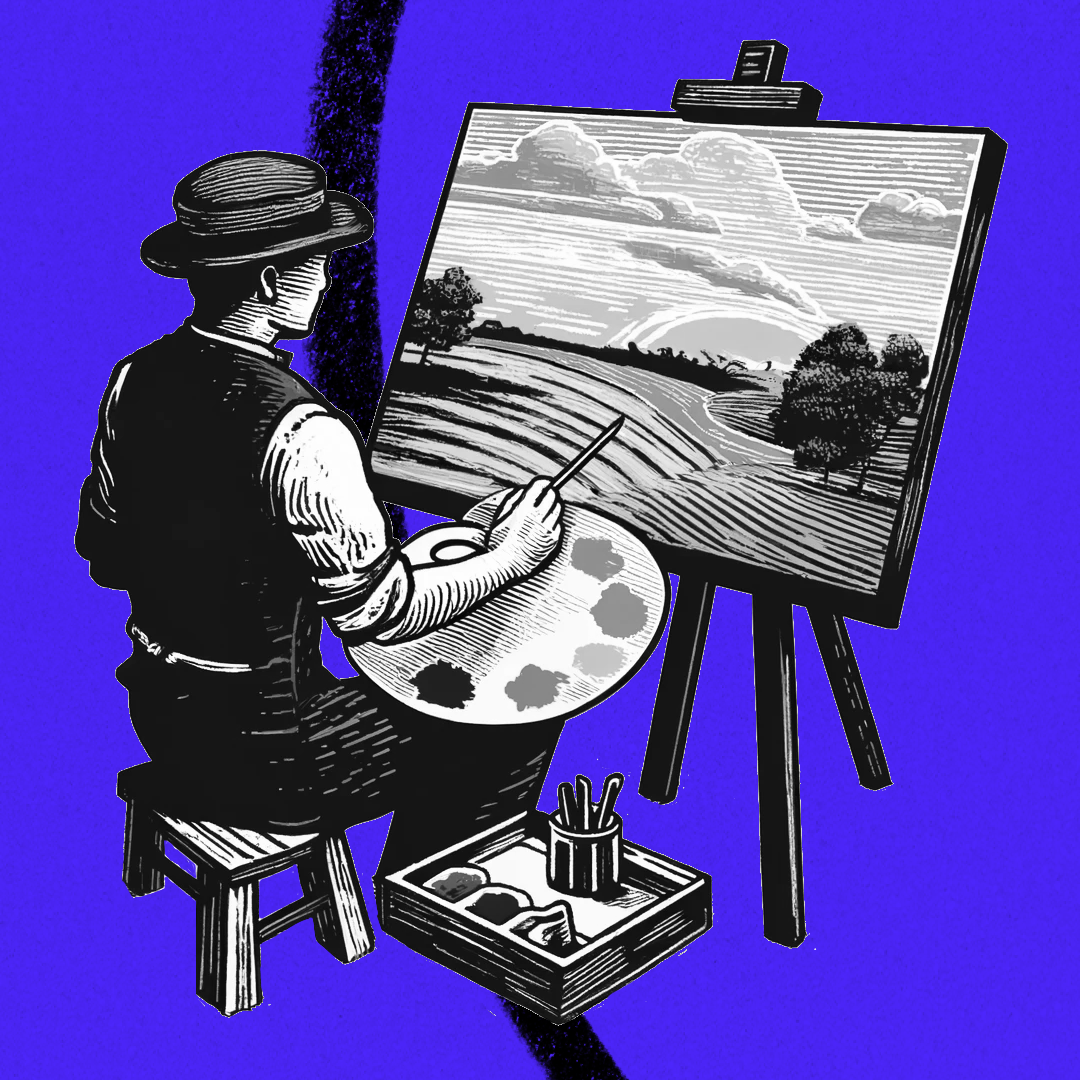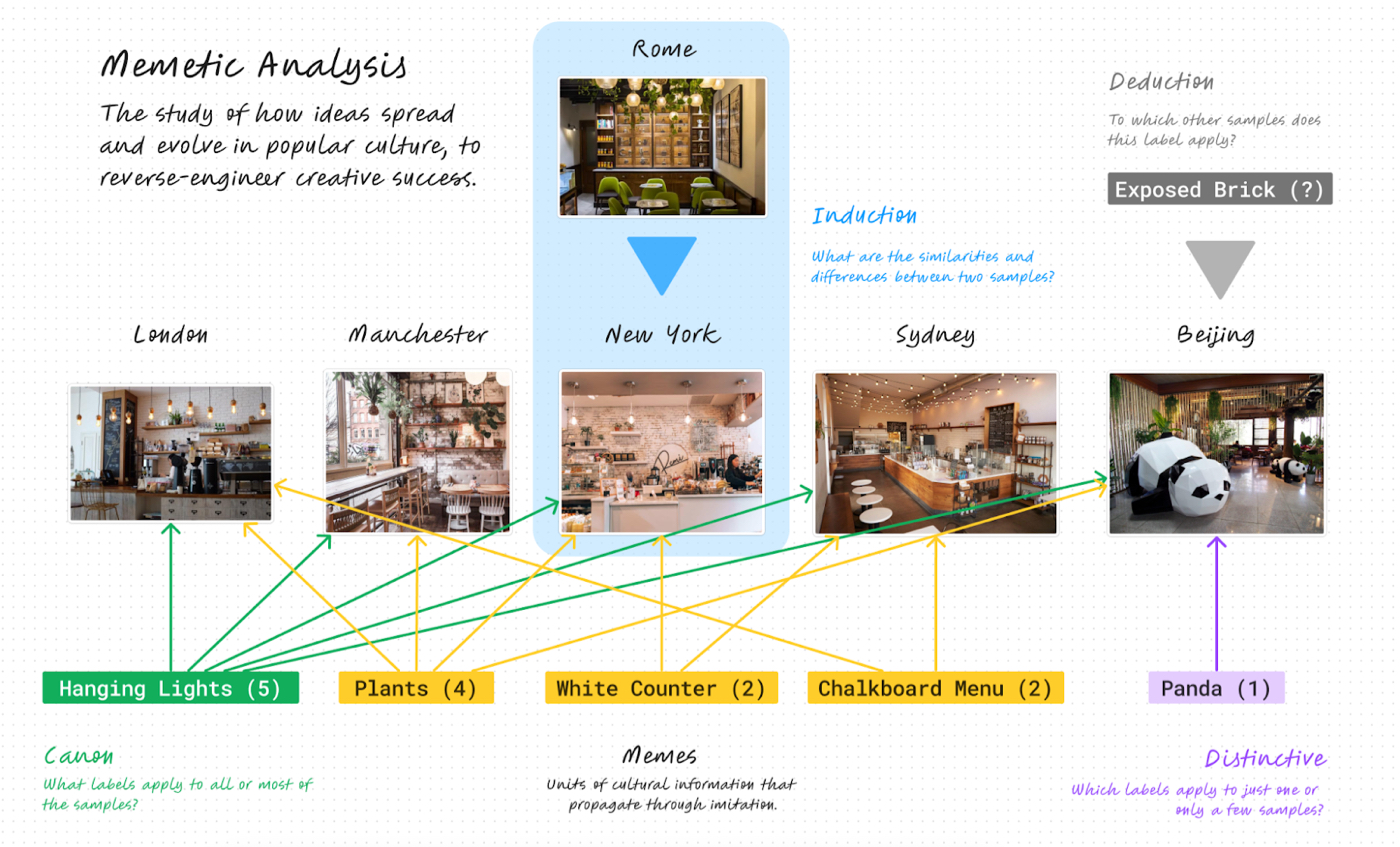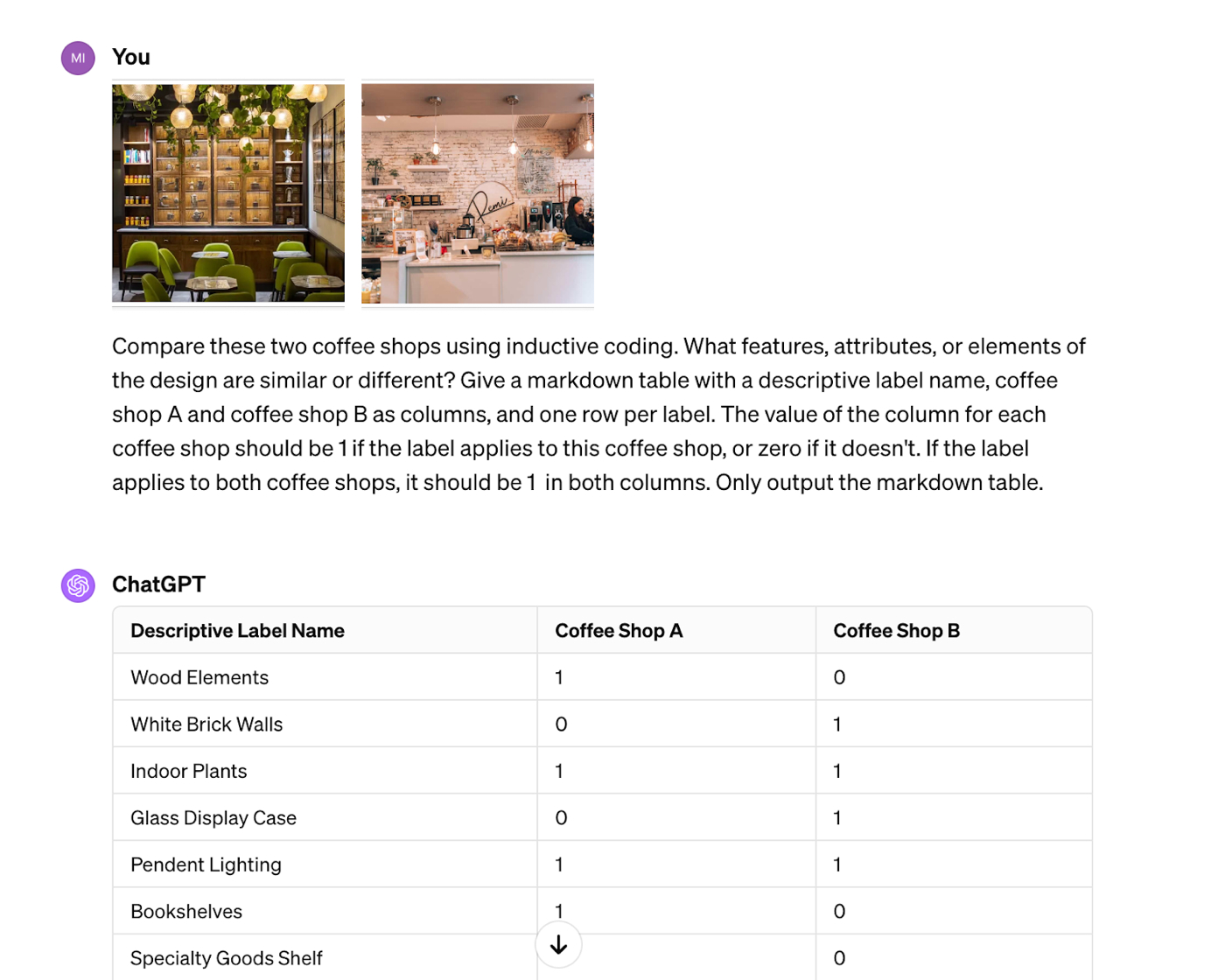
Reverse-engineer Your Creativity With AI
Know when to copy—and when to go against the grain
May 28, 2024
Taste—the ability to know and articulate what you like and why—is going to be at a premium in the allocation economy. Conveniently, it turns out that AI is incredible at helping humans understand our taste. I’ve been using it for a long time to help me define and refine the kind of writing I like, and it’s had a major impact on my own skill level.
In this piece (the second in our series about memetic analysis), prompt engineer Michael Taylor uses “inductive coding” as a unique and even more powerful way to use AI to understand your taste—and make more great creative work. I’m proud to publish it.—Dan Shipper
Walking into a coffee shop in Brooklyn or Bangkok, Des Moines or Dublin, you might notice some commonalities. You wouldn’t be surprised to see reclaimed wood furniture, hanging Edison bulbs, and minimalistic design choices. There might be elaborately tattooed baristas and indie folk music playing in the background.
This isn’t a mistake. Sameness is a powerful thing. Customers learn to look out for visual cues, which signal whether they’re in the right place or not.
There isn’t a global conspiracy to make all coffee shops look alike. It’s just that the internet has connected our world in a way that social media algorithms propel winning combinations to the whole world, flattening our culture, as Kyle Chayka writes in his book Filterworld. Ignore convention at your peril.
Tapping into design cues, if implemented correctly, can remove some of the risk and uncertainty that comes with starting a new business. The key is to know when to be similar and when to be different.
That matters because, according to the U.S. Bureau of Labor Statistics, 90 percent of startups fail, a data point that has remained consistent since the 1990s. But entrepreneurs who have started a successful business in the past are three times more likely to succeed the second time around. Experiencing success seems to lead to more success. As we established in part one of this series, artificial intelligence can help entrepreneurs compensate for a lack of experience by helping summarize and analyze the lessons from others’ success. It can find the sameness so you can exploit it.
If you’re opening that coffee shop—in any city—you need to make strategic decisions about how similar or different it should be from consumer expectations. Finding the right balance could mean the difference between starting a beloved café and investing in a money pit.
Source: Alex Murrell.Memetic analysis with GPT-4V
This flattening of culture doesn’t just apply to coffee shops. In his essay, “The Age of Average,” Alex Murrell found the same effect in everything from the design of cars to architecture to Airbnbs: If you deviate too far from what customers expect, you might become one of the 90 percent of new businesses that fails. You don’t have to adopt every fad or stereotype, but you need to know what risks you’re taking when you decide to differentiate. From a practical perspective, you’d want to look at lots of examples of other coffee shops until you notice patterns in their similarities and differences—aka memetic analysis.
Source: The author.Memetic analysis is rooted in grounded theory, which is a method for deriving insights from the data you have collected. It’s an iterative process starting with inductive coding, in which you identify similarities and differences between different samples. If we compare a coffee shop in Rome to one in New York, we might find the one in Rome features green upholstered seats, leather-bound books, and rich mahogany furniture, while the one in New York has white plastic chairs, exposed brick walls, and marble countertops. They may both have green plants, dangling pendant lights, and an iPad attached to its cash register.
Do this enough times for different pairings, and you’ll get a database of labels—also called codes or memes—that you can use for deductive coding, or finding what other samples from your database share these attributes (i.e., how many coffee shops have exposed brick?). This is boring, manual work, especially when you have hundreds or thousands of samples to sift through. Thankfully, since ChatGPT was upgraded to “see” images—called GPT-4V for developers, and the “v” is for vision—)—AI can help automate this process:
Source: Screenshots courtesy of the author.Here’s the prompt I used:
Find Out What
Comes Next in Tech.
Start your free trial.
New ideas to help you build the future—in your inbox, every day. Trusted by over 75,000 readers.
SubscribeAlready have an account? Sign in
What's included?
-
Unlimited access to our daily essays by Dan Shipper, Evan Armstrong, and a roster of the best tech writers on the internet
-
Full access to an archive of hundreds of in-depth articles
-
-
Priority access and subscriber-only discounts to courses, events, and more
-
Ad-free experience
-
Access to our Discord community


